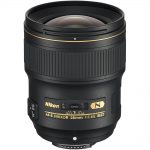Announced
Production status
Original name
Pros and cons
Genres or subjects of photography
Recommended slowest shutter speed when shooting static subjects handheld
Sigma 28mm F/1.4 DG HSM | A
Wide-angle prime lens • Digital era
Abbreviations
| DG | The lens is designed for 35mm digital cameras but can be also used on APS-C digital cameras. |
| HSM | The lens is equipped with Hyper Sonic Motor. |
| | A | Belongs to the Art series lenses. |
Specification



| Optical design: | |
| 28mm | |
| F/1.4 | |
| 35mm full frame | |
| Canon EF [44mm] | |
| Nikon F [46.5mm] | |
| Sigma SA [44mm] | |
| 75.4° (35mm full frame) | |
| 17 elements in 12 groups | |
| 3 ASPH, 2 FLD, 3 SLD | |
| On Canon EOS APS-C [1.59x] cameras: | |
35mm equivalent focal length: | 44.5mm (in terms of field of view) |
35mm equivalent speed: | F/2.2 (in terms of depth of field) |
Diagonal angle of view: | 51.8° |
| On Nikon D APS-C [1.53x] cameras: | |
35mm equivalent focal length: | 42.8mm (in terms of field of view) |
35mm equivalent speed: | F/2.1 (in terms of depth of field) |
Diagonal angle of view: | 53.6° |
| On Sigma SD APS-C [1.74x] cameras: | |
35mm equivalent focal length: | 48.7mm (in terms of field of view) |
35mm equivalent speed: | F/2.4 (in terms of depth of field) |
Diagonal angle of view: | 47.9° |
| Diaphragm mechanism: | |
Diaphragm type: | Automatic |
Aperture control: | None; the aperture is controlled from the camera |
| 9 (nine) | |
| Focusing: | |
| 0.28m | |
| 1:5.4 | |
Focusing modes: | Autofocus, manual focus |
Autofocus motor: | Hyper Sonic Motor |
Manual focus control: | Focusing ring |
Focus mode selector: | AF - MO - MF |
Manual focus override in autofocus mode: | Yes |
| Optical Stabilizer (OS): | |
| - | |
| Physical characteristics: | |
| 865g (Sigma SA) | |
| ⌀82.8×107.7mm (Sigma SA) | |
| Dust-proof and water-resistant barrel | |
| Yes | |
| Accessories: | |
| Screw-type 77mm | |
| LH828-01 - Bayonet-type petal-shaped | |
| Not compatible |
Source of data
- Manufacturer's technical data.
Manufacturer description
28mm angle of view used to be a representative wide-angle in the era of film cameras, and attracts many fans even today. To accommodate the request from many photographers who expressed the strong interest in using the familiar 28mm with Art line quality, SIGMA produces the SIGMA 28mm F1.4 DG HSM | Art, based on the know-how gained through development of the Art F1.4 prime lens lineup released so far. This newest traditional wide-angle lens, advantaged by the latest design and materials, as well as the processing technologies, is now available from SIGMA’s Art line.
This lens incorporates two FLD (“F” Low Dispersion) glass elements and three SLD (Special Low Dispersion) glass elements. In addition, it effectively arranges three aspherical lenses, including a large-diameter aspherical lens to provide thorough correction of magnification chromatic aberration —encountered particularly in wide-angle lenses. This offers high resolution over the entire sensor, while sagittal coma flare is thoroughly corrected and distortion is also minimized to the fullest. Excellent performance is delivered in street photography, as well as shooting landscapes and night skies.
The water- and oil-repellent coating on the front lens element, together with the dust- and splash-proof structure, ensures excellent performance even in the most challenging shooting conditions. The high-speed AF, thanks to the HSM (Hyper Sonic Motor) with an updated algorithm, captures instantaneous photography movement.
orefront and rear lenses incorporate a water and oil-repellent coating that allows water to be wiped away easily and prevents oil and fat from sticking to the surface, even in challenging shooting conditions. At the same time, the maintenance of the lens surface becomes easier.
This lens features a highly effective dust- and splash-proof structure with special sealing at the mount connection, manual focus ring, zoom ring, and cover connection, allowing photographers to work in all types of weather.
The high-speed AF, thanks to the HSM (Hyper Sonic Motor) with an updated algorithm, captures instantaneous photography movement.
Features a hood with lock to prevent dropping the hood.
Manual override (MO) capable of switching two full-time manual modes. By setting it to the MO position, it switches to manual focus by rotating the focus ring even during continuous AF. The default setting of Full-time MF function varies for each mount.
The Canon mount version of this lens is compatible with the Canon Lens Aberration Correction function.* Matching the optical characteristics of the lens, this function performs in-camera corrections of peripheral illumination, chromatic aberrations, distortion, and more, to further enhance image quality.
The Nikon mount version of this lens includes an electromagnetic diaphragm mechanism that allows it to receive the appropriate signals from the camera body. This feature ensures precision diaphragm control and stable Auto Exposure (AE) performance during continuous shooting.
The 9-blade rounded diaphragm creates an attractive blur in the out-of-focus areas of the image.
From the editor
Please note that this lens was also released for mirrorless camera mounts. We decided to record it separately in our database.
Notes
- Most lenses designed for the Nikon F mount are equipped with a mechanical diaphragm control system. However, the Nikon F-mount version of this lens features electromagnetic diaphragm (EMD) control system. It provides highly accurate diaphragm control and stable auto exposure performance during continuous shooting.
- EMD lenses are not compatible with Nikon D2- or D1-series, D200, D100, D90, D80, D70, D70s, D60, D50, D40, D40X, D3000 digital SLR cameras and Nikon film SLR cameras.
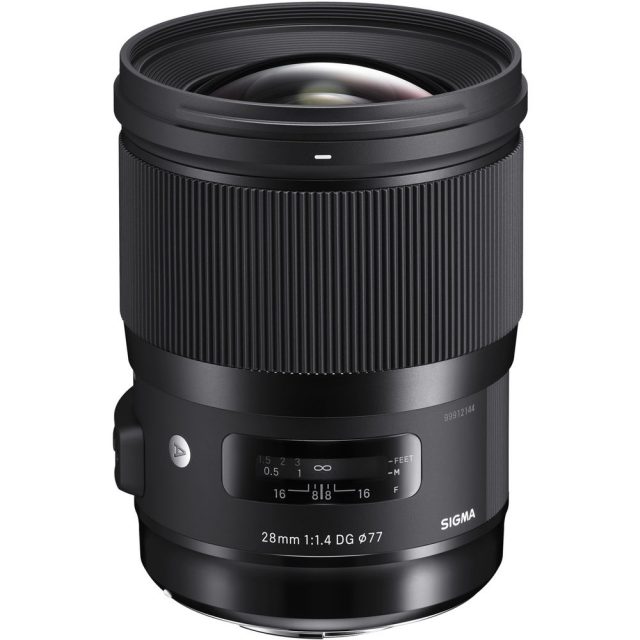
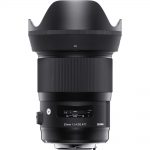
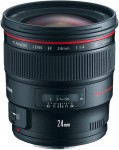
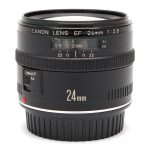
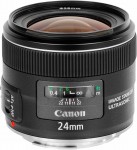
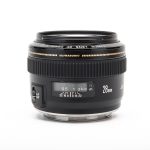
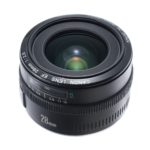
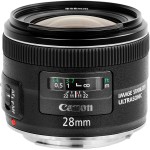
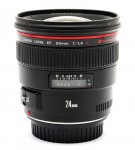
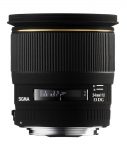
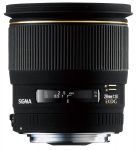
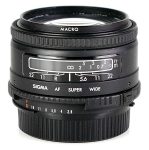
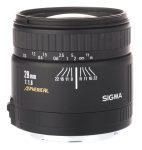
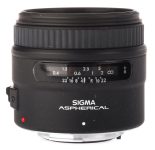
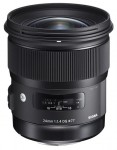
![Sigma 30mm F/1.4 EX DC [HSM]](https://lens-db.com/wp-content/uploads/2012/07/sigma-30-14-ex-dg-hsm-159x150.jpg)
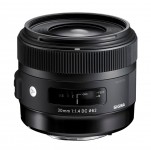
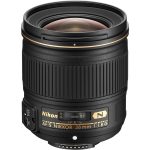
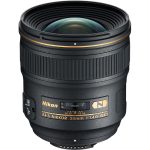
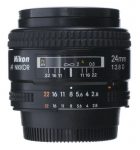
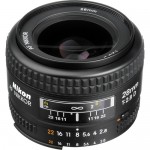
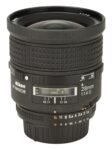
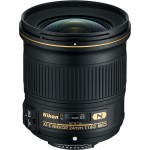
![Nikon AF Nikkor 24mm F/2.8 [I]](https://lens-db.com/wp-content/uploads/2012/10/AF-24-F28-01-142x150.jpg)
![Nikon AF Nikkor 24mm F/2.8 [II]](https://lens-db.com/wp-content/uploads/2012/10/s-l1600-39-135x150.jpg)
![Nikon AF Nikkor 28mm F/2.8 [I]](https://lens-db.com/wp-content/uploads/2012/10/AF28F28-01-153x150.jpg)
![Nikon AF Nikkor 28mm F/2.8 [II]](https://lens-db.com/wp-content/uploads/2012/10/AF28F28-01-138x150.jpeg)
